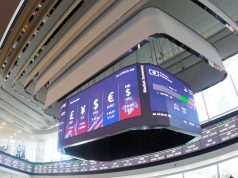Q2 debt-to-GDP ratio flat at 61%

THE National Government’s (NG) debt as a share of gross domestic product (GDP) stood at 61% at the end of the second quarter, unchanged from a quarter earlier, the Bureau of the Treasury reported.
The ratio remains above the 60% threshold considered by multilateral lenders to be manageable for developing economies. It also rose from the 60.9% posted at the end of 2022 and 60.4% at the end of 2021.
The Department of Finance expects the debt-to-GDP ratio to end the year at 61.4%.
The government aims to bring the debt-to-GDP ratio below 60% by 2025.
The NG’s outstanding debt was P14.15 trillion at the end of June. Year on year, the debt stock has risen 10.6%.
The debt stock at the end of June was also equivalent to 56.6% of gross national income, lower than the 57.2% posted at the end of March.
The NG’s total debt service bill was equivalent to 5.8% of GDP in the second quarter, falling from 10.1% in the first quarter.
Rizal Commercial Banking Corp. Chief Economist Michael L. Ricafort said that high interest rates and a weakening peso could lead to increased debt, making it difficult to cut the debt-to-GDP ratio.
The Monetary Board in June extended its pause for a second straight meeting, keeping the key rate at a near 16-year high of 6.25%.
Between May 2022 and March 2023, the central bank raised borrowing costs by a total of 425 basis points.
“Mostly medium- to long-term borrowing will also help keep outstanding debt levels relatively elevated (in record territory) for now. Debt payments will eventually ease the outstanding debt level and correspondingly help ease the debt-to-GDP ratio,” he said in a Viber message.
China Banking Corp. Chief Economist Domini S. Velasquez said that the debt-to-GDP ratio was below program due to the smaller budget deficit incurred in the past months.
“This, however, does not bode well for growth as seen in the lower-than-expected GDP in the second quarter,” she said in a Viber message.
The NG’s budget deficit narrowed 18.17% to P551.7 billion in the first six months of the year.
Mr. Ricafort said that robust growth will also help trim the debt-to-GDP ratio.
“Expanding the GDP denominator would largely keep the debt-to-GDP ratio steady, at the very least, or further bring down gradually the ratio for the coming months, despite the slower GDP growth recently due to higher base effects amid the one-time election-related spending a year ago,” he added.
The economy grew 4.3% in the second quarter, much slower than the 6.4% growth posted in the first quarter and the year-earlier 7.5%.
It is also well below the government’s 6-7% target for the year.
“We think that sticking to the programmed spending, with a realistic and credible fiscal program, should be more beneficial to the economy. For debt to remain sustainable, the economy needs to grow similar to its pre-pandemic growth rates of 6.0-6.5%,” Ms. Velasquez added. — Luisa Maria Jacinta C. Jocson



